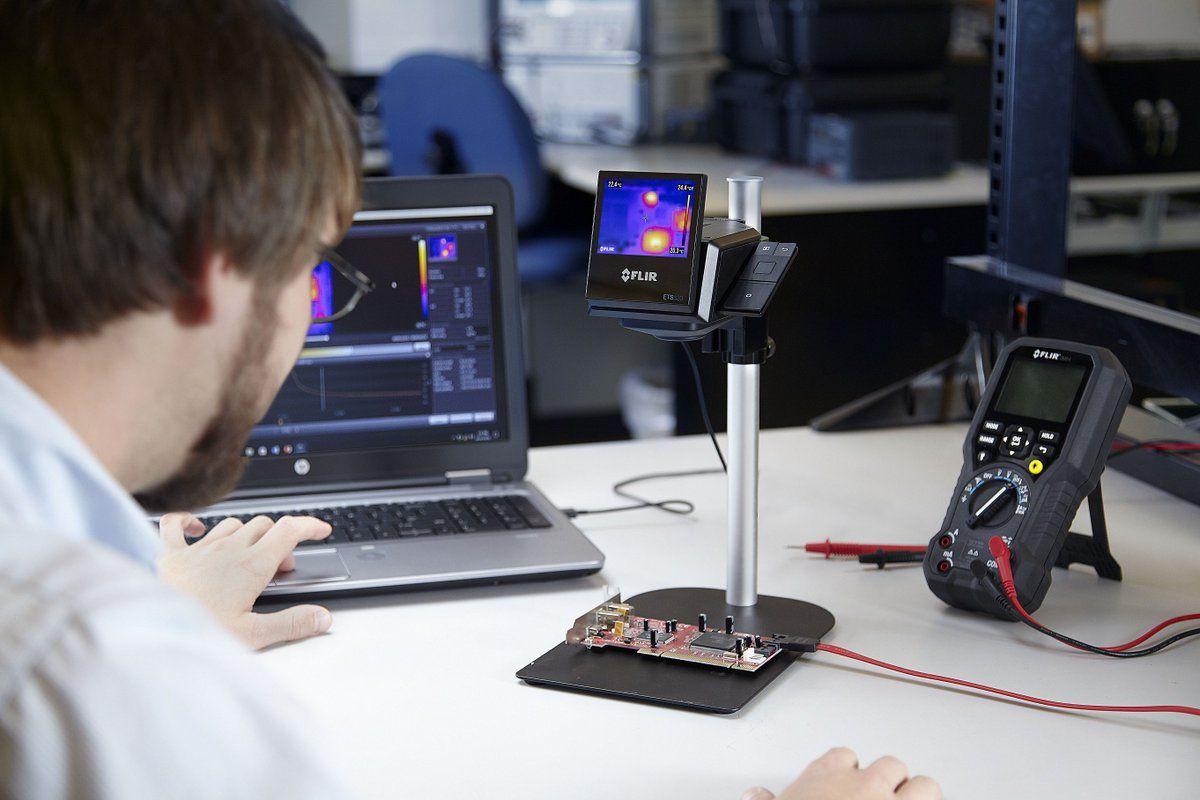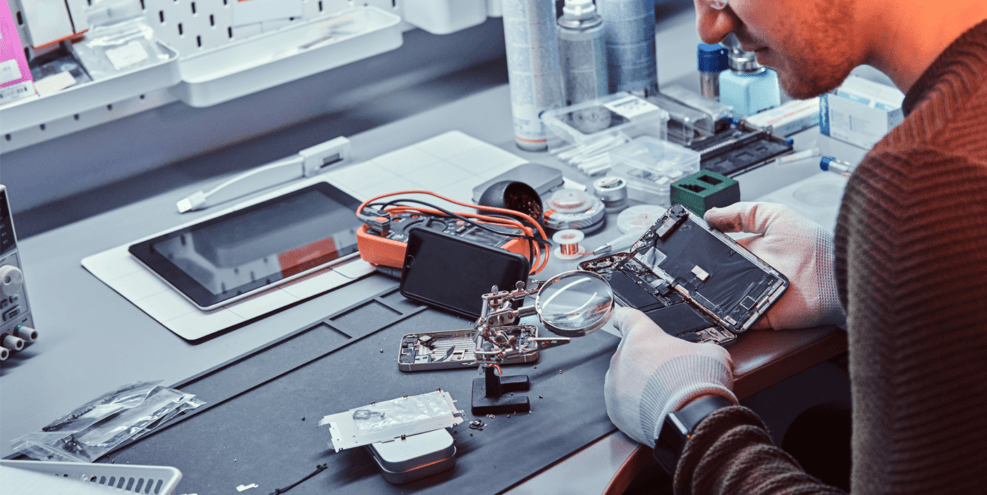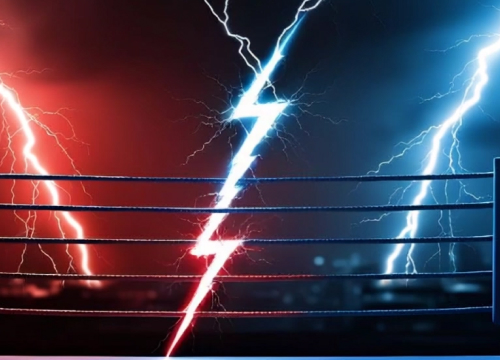Consumer electronics will remain indispensable, as they are used daily. By the end of 2023, the Consumer Electronics market is projected to generate a revenue of US$1,052.0 billion, which is expected to grow annually by 2.27%. These figures indicate that consumers continue to prioritize this sector, although companies’ revenue in full-cycle consumer electronics product development depends on numerous factors.
New devices with market demand are introduced each year, even though this sector produces a vast array of technologies that will likely be replaced by more recent innovations the following year. Nevertheless, people find such technologies irresistible, leading many to contemplate the steps involved in developing a new electronic product and its specifications.
7 Steps for Developing a New Electronics Product
Brainstorming
Contrary to some opinions, brainstorming is a significant first step in the consumer electronic product development process. Engaging in thorough discussions about project plans and goals is essential at the initial stage. This approach allows for a deep dive into market research, enabling the identification of innovative solutions that can differentiate your product in a competitive landscape.
Brainstorming isn’t just about generating ideas; it’s also about validating them. Understanding current trends and anticipating future demands is crucial in the consumer electronics industry, where technology evolves rapidly. A collaborative brainstorming session can reveal insights into user needs and preferences, which are vital for creating a product that resonates with your target audience.
Moreover, this phase is about laying the groundwork for the entire consumer electronic products development life cycle. Whether you have a clear vision or are still exploring options, a professional team can guide you through every stage of development. From conceptualization to final execution, the focus remains on delivering a product that meets and exceeds customer expectations.
Brainstorming is more than just an ideation process; it’s a strategic exercise in understanding market dynamics, consumer behavior, and technological possibilities. It sets the stage for a development journey that is informed, focused, and aligned with market realities.
Developing a Product Concept
One of the phases of consumer electronics product creating is the product development stage, which is often utilized to lay the foundation of the development process. Once an idea is fully fleshed out, a professional team brings it to life by presenting a design and a detailed product concept.
At this stage, tangible elements come into play. You will be provided with a printed circuit board model, which allows for a 3D visualization of the product, offering an opportunity to see how it fits within a case if needed. Such physical representations facilitate making any necessary adjustments.
Meticulous attention to detail is also important, especially concerning the product’s dimensions. For instance, engineers must ensure that the battery fits the required sizes. Suppose there are any discrepancies, such as the battery not fitting into the allocated space. In that case, the team will adeptly modify the dimensions by slightly increasing them or reducing the board size. Achieving this level of precision will allow to achieve a harmonious balance between design aesthetics and functional requirements.
Moreover, the product concept phase is about more than just physical dimensions. It includes considering the user experience, integrating advanced features, and ensuring the final product is technically sound and appealing to consumers.
Crafting a Detailed Project Timeline
Creating a detailed Gantt chart or schedule is advantageous in the development of a consumer electronics product, especially when working under tight deadlines. This process involves engineers evaluating the timing and scope of tasks in a comprehensive manner to establish a realistic timeline for product development.
Professional teams typically factor in potential delays when calculating deadlines. This approach ensures that the final delivery date accounts for unforeseen circumstances. It’s essential to recognize that, despite planning, specific issues can arise beyond the development team’s control. For instance, external factors like border control issues or logistical delays can impact the delivery timeline even if a component is ordered well in advance.
Additionally, an effective schedule includes regular checkpoints for review and adjustment. This flexibility allows the team to respond proactively to challenges and make necessary modifications to the project plan. Transparent communication throughout this process ensures all stakeholders are aligned and informed about the project’s progress.
As a result, developing a comprehensive schedule, complete with contingencies, is vital for the process of consumer electronic product development. This strategic approach helps mitigate risks and ensures a smoother path to bringing innovative products to market.
The Development Process
After navigating through the various stages of development consumer electronics, we reach the most exciting phase: actual project development. In this stage, companies typically source components from official suppliers and distributors, guaranteeing the high quality of the final product.
A vital aspect of this phase is assembling essential components, sometimes even encompassing entire stands. Therefore, designing an electronic microcircuit, commonly known as a printed circuit board, is necessary.
Therefore, the programming aspect of the user interface is also developed during this phase. This includes both the visual and functional elements of the UI, ensuring that the software is not only aesthetically pleasing but also efficient and easy to navigate. The UI significantly influences the user’s perception and experience of the product.
Overall, this project development phase in consumer electronics is where ideas and plans materialize into tangible products. It requires a blend of technical expertise, creative design, and strategic planning to bring a new electronic product to market successfully.
Launching a Test Batch
This phase involves purchasing components, assembling the printed circuit board, and manufacturing the initial devices. These prototypes are designed to resemble the final product in form and function closely.
Once the prototypes are assembled, the electronics product development cycle continues with a series of tests to evaluate their performance. This includes checking the hardware for defects, verifying components’ integration, and ensuring the device meets the client’s requirements. The testing phase allows for identifying and addressing any issues before mass production.
In addition to hardware testing, the installation of software also takes place. This includes loading the operating system, drivers, and other necessary software. This step is utilized to assess the software’s compatibility with the hardware and overall performance.
Furthermore, launching a test batch phase offers an opportunity for customization. Based on feedback and testing results, adjustments can be made to enhance functionality or rectify any shortcomings. Usually, customers prefer to have the option to request additional features or modifications, allowing for a degree of personalization before finalizing the product.
Certification Testing in Consumer Electronics Development
Depending on the nature of your project, various certifications may be required, such as those from the FCC, UL, and EU standards, among others. They ensure that the product meets regulatory compliance and industry standards.
Pre-certification tests are highly recommended to mitigate the risk of significant material losses. These preliminary tests help identify any compliance issues before undergoing the formal certification process. During this one of the most important electronic product development stages, it’s also crucial to determine the specific device class of your product, as this influences the type of certification required.
A well-planned test schedule will manage this phase efficiently. It allows for the timely identification and resolution of compliance-related issues, ensuring that the product development process remains on track. This foresight saves time and resources, contributing to a smoother transition to the subsequent phases of development.
Preparing for Production in Electronics Product
Among the steps of development a new electronics product, industrial production of market-ready items culminates. This stage is where the meticulous brainstorming, planning, design, and testing coalesce into the tangible production of the product.
Industrial manufacturing involves complex processes, from sourcing high-quality materials to employing advanced manufacturing technologies. It’s significant to ensure that the production line is optimized for efficiency and accuracy, as this directly impacts the quality of the final product.

3 Most Common Issues You May Face
Component Sourcing and Availability
The availability of specific components can fluctuate, leading to delays and increased costs.
Solution: Have flexible component selection strategies and reliable supplier relationships. For that, you may require a trusted partner, like Sirin Software. Early engagement with suppliers and considering alternative components during the design phase can also be effective.
Integration of Hardware and Software
Integrating hardware with software can often lead to unexpected issues, especially when dealing with advanced technologies or new platforms.
Solution: The solution to this issue is professional hardware and software teams from the project’s inception. Various integrated development practices can ensure that both hardware and software are designed with mutual compatibility in mind.
Regulatory Compliance and Certifications
Electronic products often need to meet various regulatory standards and obtain certifications, which can be time-consuming.
Solution: Engage with regulatory compliance experts early in the development process. This includes performing pre-compliance testing during the design phase to avoid major redesigns later.
Consider Sirin Software Your Trusted Partner
Choosing the right company that will answer all your questions on how to develop a new consumer electronics product and assist with its creation is a decision that can significantly influence its success. We advise you to trust us, a reliable Sirin Software company with a broad portfolio of case studies demonstrating our expertise and experience across various sectors.
We are a company with a diverse background in such fields as Consumer Electronics, Logistics and Transportation, Warehouse Management, Green Tech, and Telecom industries. This breadth of experience is beneficial since it indicates our ability to handle complex, multifaceted projects and apply insights from one industry to another.
Conclusion
After exploring the article outlining the steps of development a new electronics product, it becomes clear why the expertise of a professional is invaluable. Developing an electronic product is a complex process full of potential challenges, ranging from logistical hurdles to intricate technical issues. These ‘underlying stones’ can significantly hinder the path to success if not expertly navigated.
Moreover, having a professional team on board provides peace of mind. They take the burden of troubleshooting and problem-solving off your shoulders, allowing you to focus on other critical aspects of your business. The insight into the latest technological trends and market demands can also be instrumental in shaping a product.





